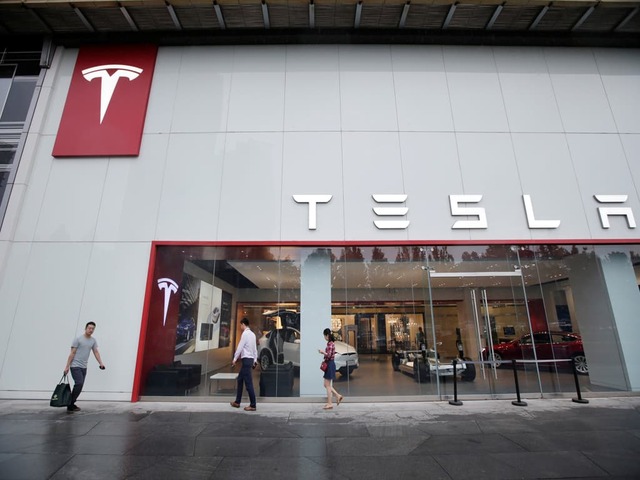
Tesla is reviewing 578,607 vehicles in the United States since people on foot might know nothing about an oncoming vehicle assuming admonition hazard sounds are darkened, U.S. controllers said Thursday.
Under expanding investigation from the National Highway Traffic Safety Administration, Tesla has given 10 U.S. reviews throughout the most recent four months.
Tesla is reviewing almost 579,000 vehicles in the US on the grounds that a “Boombox” capacity can play sounds over an outside speaker and dark discernible alerts for walkers.
The review is the fourth unveiled over the most recent fourteen days as US wellbeing controllers increment investigation of the country’s biggest electric vehicle creator. In two of the reviews, Tesla settled on choices that disregard government engine vehicle security principles, while the others are programming mistakes.
The electric vehicle producer is reviewing some 2020-2022 Model S, Model X, Model Y, and 2017-2022 Model 3 vehicles in light of the fact that the “Boombox work” permits sounds to be played through an outer speaker while the vehicle is moving.
NHTSA said the vehicles neglect to agree with a government engine vehicle wellbeing standard on least sound prerequisites for electric vehicles.
Tesla will play out an over-the-air programming update that will incapacitate the Boombox usefulness when the vehicle is in Drive, Neutral and Reverse modes. A large number of Tesla’s new reviews have been to address programming issues.
The National Highway Traffic Safety Administration says on its site on Thursday that the vehicles and SUVs have what Tesla calls a “Boombox” work that permits drivers to play sounds while the vehicles are moving. This disregards government wellbeing norms that require passerby cautioning commotions for electric vehicles, which make little clamor while voyaging, the office says.
Tesla said it didn’t know about any accidents, wounds or fatalities connected with review.
After Tesla presented “Boombox” in December 2020, NHTSA gave a data demand in January 2021, the automaker said. That was trailed by various virtual gatherings on the issue over resulting months.
The office says the issue will be fixed with an over-the-air programming update that will handicap “Boombox”, in drive, opposite or unbiased.
“The Boombox usefulness permits a client to play preset or custom sounds through the PWS [pedestrian cautioning system] outer speaker when the vehicle is left or moving,” the NHTSA says in reports posted on its site.
“While Boombox and the walker ready sound are totally unrelated sounds, sounds produced utilizing Boombox could be understood to darken or keep the PWS from consenting” with wellbeing guidelines, the office composed.
The review covers specific 2020 through 2022 Tesla Model X, S and Y vehicles, as well as 2017 through 2022 Model 3s, as per records.
In September, NHTSA overhauled an examination concerning the issue, Tesla said. In October Tesla safeguarded tests and reasoning used to decide Boombox’s consistence. Tesla consented to a review following two days of gatherings last month.
Boombox utilizes the Pedestrian Warning System speaker and clients can redo sounds.
Under rules commanded by Congress, automakers should add sounds to electric vehicles when they are moving at velocities of up to 18.6 miles each hour to assist with forestalling wounds among walkers, cyclists and the visually impaired.
A message was left on Thursday looking for input from Tesla, which has disbanded its media relations office. The organization doesn’t know about any accidents or wounds because of the issue, the NHTSA said.
Likewise on Thursday, California controllers said they had sued Tesla claiming the organization has been victimizing Black representatives at the San Francisco Bay Area plant where the greater part of its vehicles are made.
The separation claim, recorded late Wednesday in Alameda district predominant court by California’s branch of fair business and lodging, was ignited by many specialist grumblings, said Kevin Kish, the organization’s head.
In an articulation on its site, Tesla referred to the claim as “unjustifiable and counterproductive”.
Electric vehicles are frequently harder to hear at lower speeds than fuel controlled motors. At higher velocities, tire commotion, wind obstruction, and different variables kill the requirement for ready sounds, NHTSA said already.
Ray Canaan is the author of Funds Management and he is Best writer and He has a particular interest covering digital strategy, leadership, enterprise culture, and diversity. Canaan meets regularly with Chief Information Officers and other business technology executives to discuss world issues and keep on top of news trends.
Disclaimer: The views, suggestions, and opinions expressed here are the sole responsibility of the experts. No FUNDS MANAGEMENT journalist was involved in the writing and production of this article.